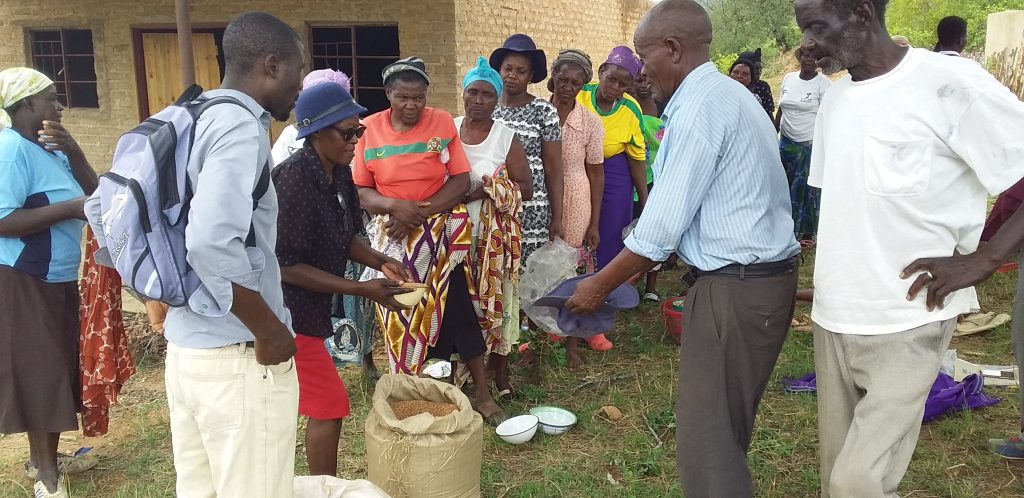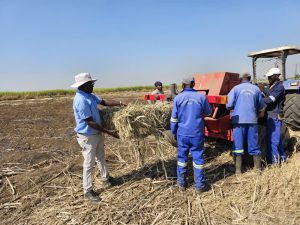….CGCDZ takes lead in prioritizing agricultural transition in rural areas
EnviroPress Correspondent
The Centre for Gender and Community Development (CGCDZ) has over the past two cropping seasons provided dozens of villagers in Bikita and Masvingo districts with small grain seeds as part of efforts to help them transition to drought-resistant crops.
As a result of the programme, many villagers in wards 11 and 13 have begun what they consider to be a long journey towards an adaptable farming transition.
In the local context, small grains – which some feel should rather be called traditional grains – consist of such crops as millet, sorghum and rapoko.
One village woman who is a beneficiary of the programme, Locadia Nharo nee Nyangara, said her community was very eager to participate in the small grains initiative since such grains fetched more money on the market and had more uses that maize.
“Small grains gives you more money for every bucket sold than maize. This helps us to be able to send our children to school and take care of our other domestic needs,” said Nharo.
She says many villagers buy small grains like rapoko from each other because it is a key ingredient in making traditional brews and ordinary drinks that still form an important component of the village economy and cultural practices.
CGCDZ programmes manager Chida Mudadi says his organisation acknowledges the need to help capacitate communities to respond to climate-change induced food insecurity.
“Climate change is real and farmers in communal lands need to be helped to adapt. Here in Masvingo province, traditional or small grains are the best alternative as maize can do best under irrigation. It is unfortunate that irrigation infrastructure still remains inaccessible to the majority of people in rural areas who also happen to be the most vulnerable,” said Mudadi.
In the Masvingo Rural District where CGCDZ runs similar initiatives as those in Bikita, villagers are making use of new climate-change mitigation techniques and adaptive farming practices including a greater embrace of traditional grains.
Villagers in many areas of this district say traditional grains are more adaptable to climate change as they are more resilient even when exposed to high temperatures and law rainfall.
One of the villagers who is moving towards such grains is Elimon Mawire of Ward 17, who says the traditional grains are also adaptable to soil types that are common in most communal areas.
“These are grains that traditionally were planted by our forefathers before the introduction of Western crops. The introduction of Western crops and farming methods led to the marginalization of local knowledge and traditional crops.
“It is good that there is now a growing realization that local communities can do better to ensure food security if they are helped to restore those traditional crops,” said Mawire.
However, he acknowledged that the push for farmers in rural areas to start planting more sorghum, millet and rapoko faced several cultural and technological obstacles.
“It has a lot to do with culture. It was cultural for our pre-colonial societies to grow and consume small grains as their staple food but that culture is long gone. People are now used to maize which unfortunately is no longer doing well in our dry areas with tired soils. Though maize might be easier to grow and harvest, it requires a lot of rainfall and at least two fertilizers which most of us can’t afford,” he said.
Mirirai Tangesu of Ward 12 told EnviroPress that although she was willing to shift to small grains, it was a hard choice as it would mean more hard labour.
“Many people are reluctant to commit more of their effort and pieces of land to small grains because farming them is more labour-intensive. Sorghum, for example, attracts flocks of birds that may finish up your whole harvest so you need to guard your fields the whole day,” said Tangesu.
She said students in polytechnics must be encouraged to come up with innovative technology that can make the harvesting and packaging of small grains easier.






